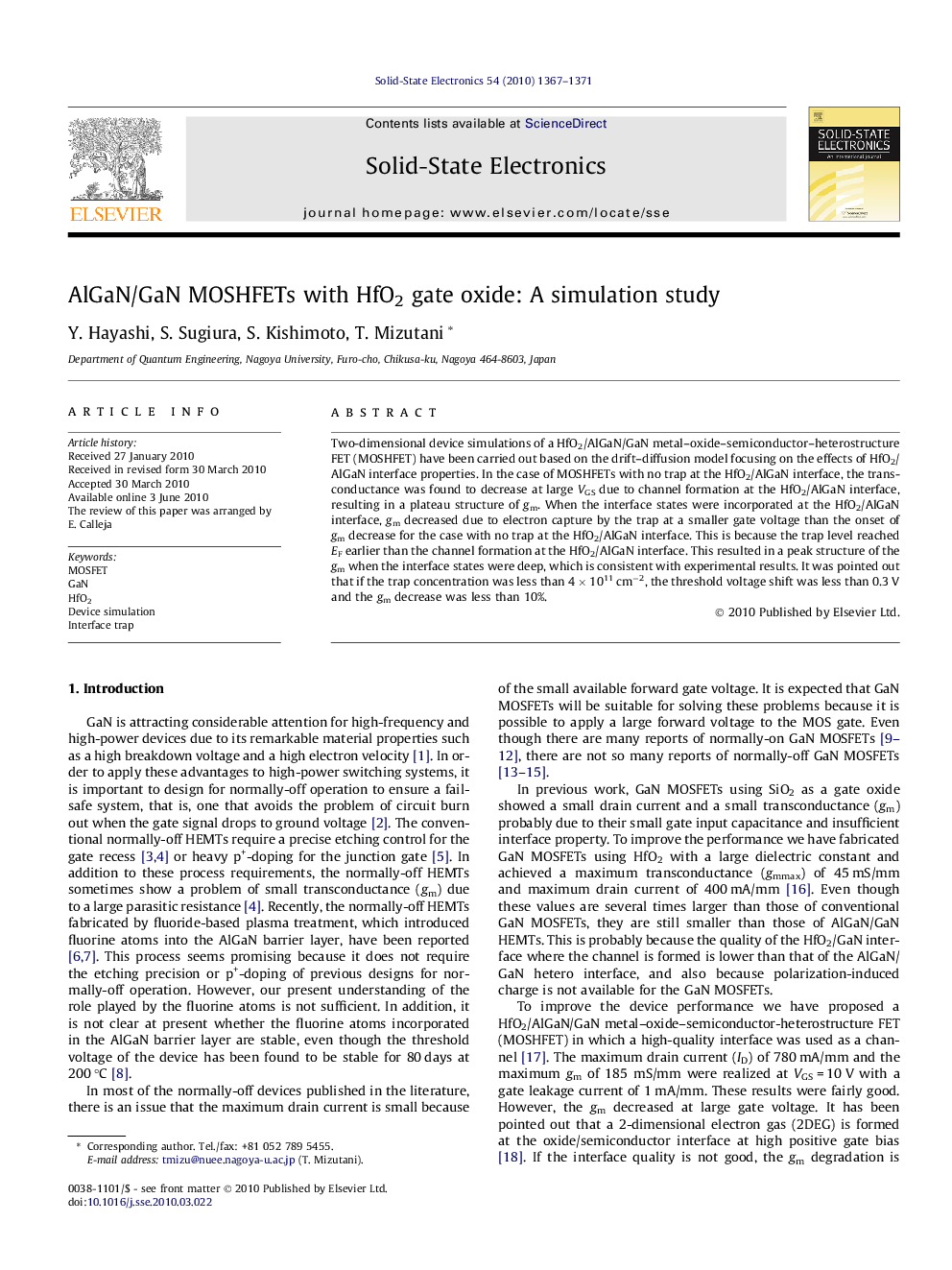| Article ID | Journal | Published Year | Pages | File Type |
|---|---|---|---|---|
| 753190 | Solid-State Electronics | 2010 | 5 Pages |
Two-dimensional device simulations of a HfO2/AlGaN/GaN metal–oxide–semiconductor–heterostructure FET (MOSHFET) have been carried out based on the drift–diffusion model focusing on the effects of HfO2/AlGaN interface properties. In the case of MOSHFETs with no trap at the HfO2/AlGaN interface, the transconductance was found to decrease at large VGS due to channel formation at the HfO2/AlGaN interface, resulting in a plateau structure of gm. When the interface states were incorporated at the HfO2/AlGaN interface, gm decreased due to electron capture by the trap at a smaller gate voltage than the onset of gm decrease for the case with no trap at the HfO2/AlGaN interface. This is because the trap level reached EF earlier than the channel formation at the HfO2/AlGaN interface. This resulted in a peak structure of the gm when the interface states were deep, which is consistent with experimental results. It was pointed out that if the trap concentration was less than 4 × 1011 cm−2, the threshold voltage shift was less than 0.3 V and the gm decrease was less than 10%.
